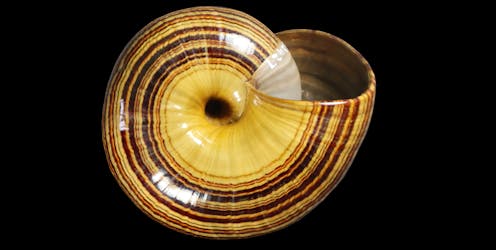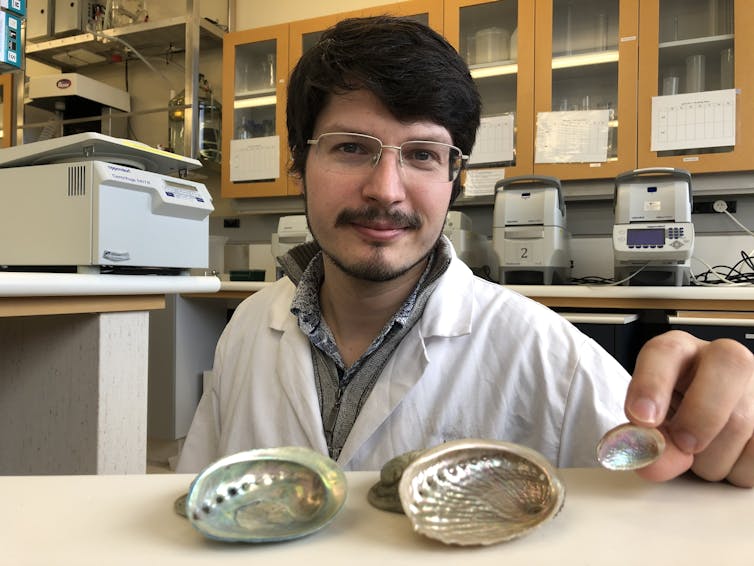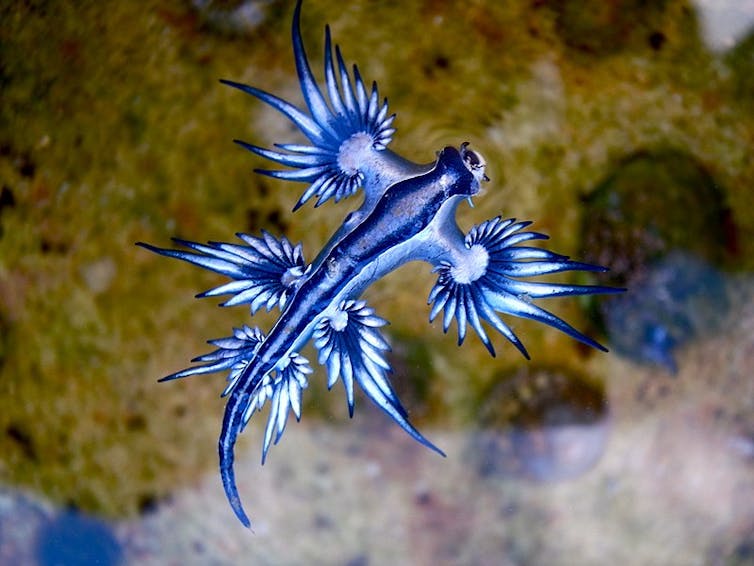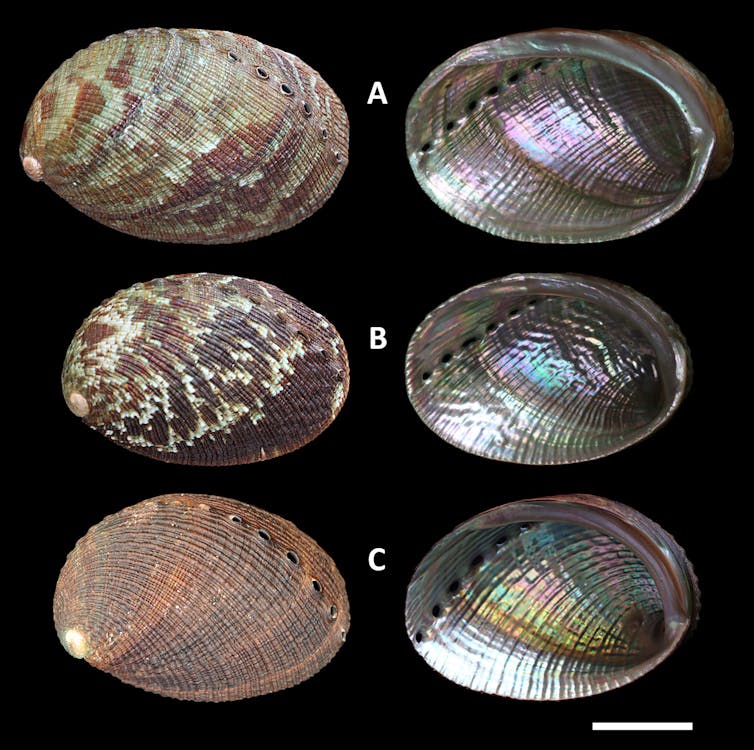Source: The Conversation (Au and NZ) – By Kerry Walton, Researcher, University of Otago

Most people have collected shells at the beach. Some have even started a shell collection. But few people realise these shells are a unique genetic resource that scientists are only beginning to tap into.
For over a decade it has been possible to extract and sequence ancient DNA from empty mollusc shells up to tens of thousands of years old. However, these techniques have so far proven very expensive and unreliable.
Our new international research represents a major advance towards doing so consistently and (relatively) cheaply. We employed these methods to better understand the evolutionary relationships between diverse populations of Aotearoa New Zealand’s smallest abalone/pāua species, Haliotis virginea.

Guy Frederik/University of Otago, Author provided
Our results show the evolutionary history in this group was a lot more complicated than it appeared. Understanding how different populations are related to one another, and indeed what species they are, is critical in managing and conserving marine areas and resources.
Natural history collections across the world contain tens of millions of mollusc shells. Broader application of our methods would increase the proportion of samples in museum collections that can be used for genetic research by several orders of magnitude. Normally, only freshly collected and preserved tissues are used for genetic research.
We can now sequence DNA from thousands of mollusc species that have never been found alive, including those that went extinct recently, or those living in difficult-to-access places such as on deep-sea mountains. Such palaeogenetic studies of shells can reveal how species and populations have changed through time.
A rich and varied biological menagerie
Molluscs are an extraordinarily diverse animal group that includes snails, clams and octopuses.
In New Zealand, culturally important kaimoana (seafood) species such as green-lipped mussels are farmed extensively and are worth hundreds of millions of dollars to the economy.
Molluscs can also be carnivorous, such as New Zealand’s giant, worm-eating Powelliphanta snails, many of which are critically endangered.

Kerry Walton/University of Otago, Author provided
Blue sea dragons drift in the open ocean and feed on dangerous bluebottle jellyfish. Some cone snails shoot poisoned darts to catch fish, and have been known to kill humans. Fortunately, those in New Zealand are unlikely to be deadly.

Sylke Rohrlach/Wikipedia, Author provided
Molluscs can also be parasitic, living inside or attached to other marine species. Tropical vampire snails suck the blood of sharks while they sleep.
Scaly-foot snails secrete metal scales like a suit of armour. Other species rely on camouflage for protection. Carrier shells glue rocks and other shells onto their own shell to blend in on the seafloor.

Kerry Walton/University of Otago, Author provided
Most molluscs are really small. Tiny, almost transparent snails, often less than a millimetre in size even when fully grown, live deep underground in aquifers and caves. Conversely, giants such as the colossal squid, which live in Antarctic waters, can exceed 500kg and would produce a calamari ring larger than a hula hoop.
The living dead of natural history collections
Some molluscs living today were born before Europeans arrived in New Zealand. Icelandic clams have been recorded as living for more than 500 years.
However, death may not be the end of their story. Most mollusc species produce a robust shell that can persist in the environment for thousands of years. Molluscs are, accordingly, very well represented in the fossil record, and have significantly improved our understanding of biodiversity changes through time.
Amazingly, only half of New Zealand’s roughly 4,000 living mollusc species have been seen or collected alive. This includes tiny tree-top-dwelling snails that have been sieved out of leaf litter, or shells scooped out of sediments around the base of undersea mountains that are too rocky to sample directly.
A large proportion of the known mollusc species have yet to be given scientific names.

Kerry Walton/University of Otago, Author provided
Natural history collections represent an invaluable and undervalued resource: an archive of knowledge and the solutions to questions never before thought possible, or that were held back by technological limitations of the time.
With congruent climate and biodiversity crises, museum collections are no mere Victorian-era flights of fancy. They are critical to help us to better understand and protect our unique fauna and flora. These collections are essential to connect present and future generations with these amazing species.
![]()
Nic Rawlence receives funding from the Royal Society of New Zealand Marsden Fund.
Kerry Walton does not work for, consult, own shares in or receive funding from any company or organisation that would benefit from this article, and has disclosed no relevant affiliations beyond their academic appointment.
– ref. Empty mollusc shells hold the story of evolution, even for extinct species. Now we can decode it – https://theconversation.com/empty-mollusc-shells-hold-the-story-of-evolution-even-for-extinct-species-now-we-can-decode-it-187927







